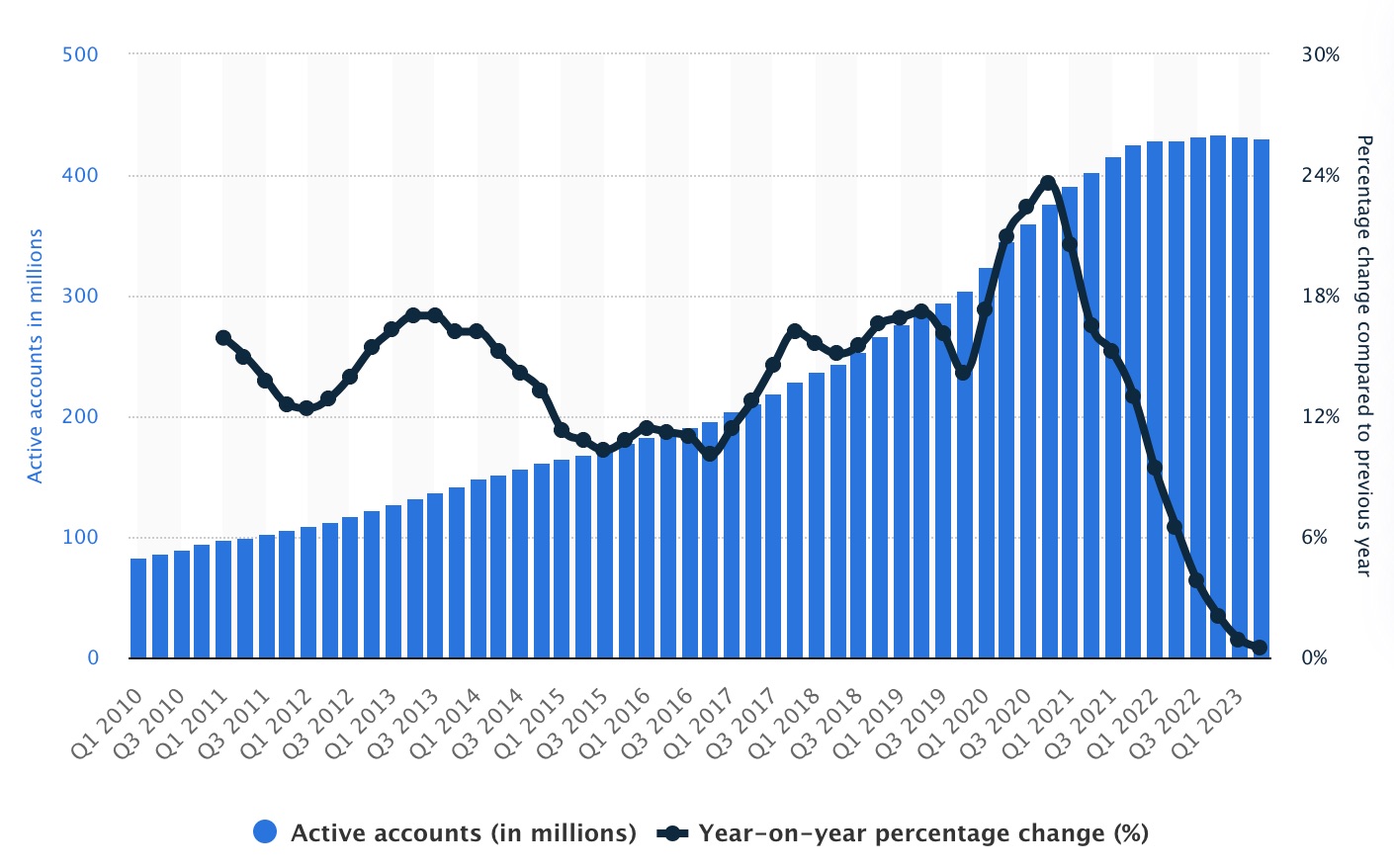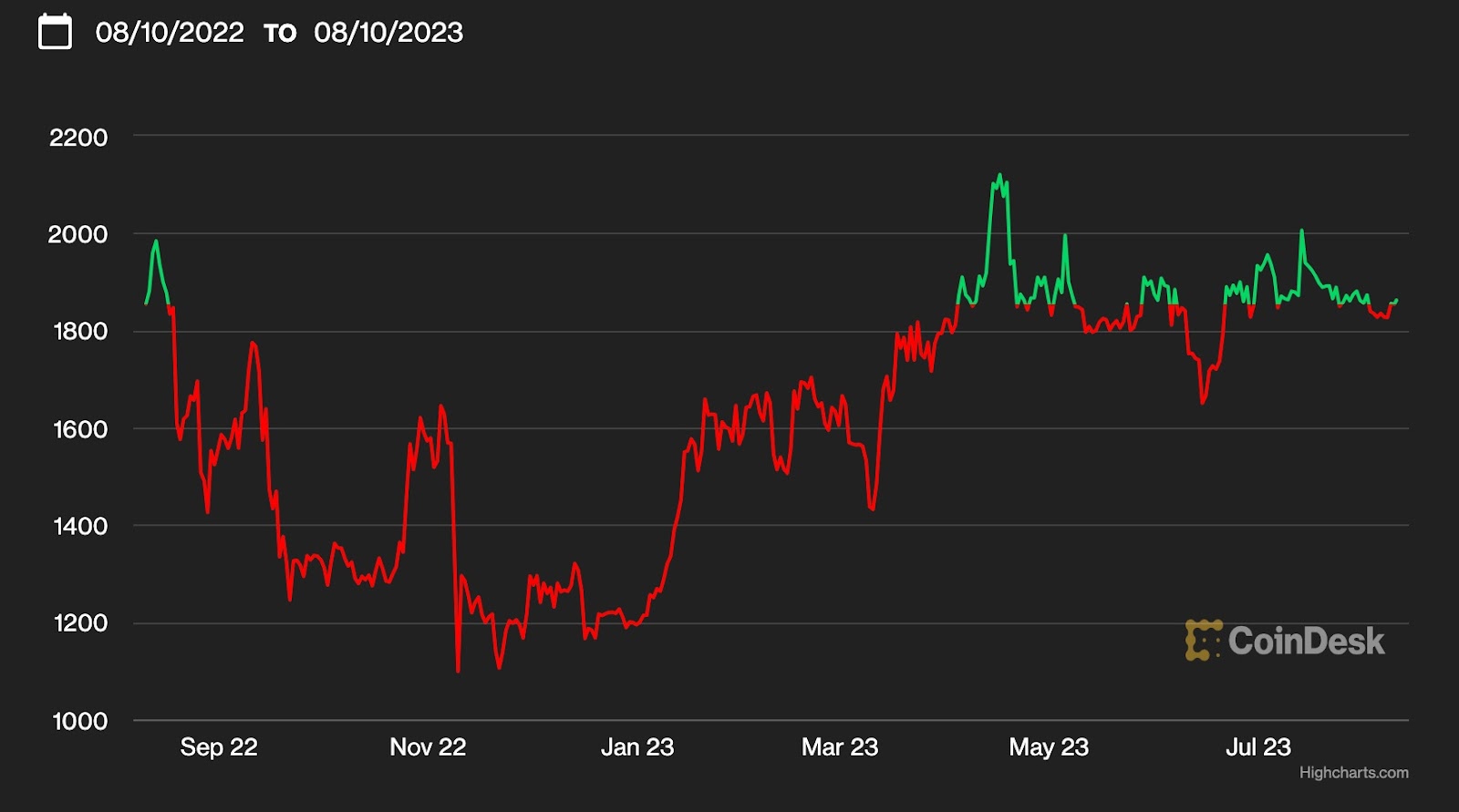PayPal Stablecoin Could Make Ethereum the Internet’s Monetary Backbone
By Noah Washington August 10, 2023

Summary
- PayPal's stablecoin PYUSD is pegged to the US dollar and issued on Ethereum
- The Ethereum blockchain already has some of the highest usage in the cryptocurrency world, thanks to NFTs, DeFi - and stablecoins
- The recent announcement of PYUSD has elicited passionate responses within the cryptocurrency community
- PayPal has hundreds of millions of users, and stablecoin adoption by the company is a huge onramp to the cryptocurrency world
Unveiled on August 7, PayPal's cryptocurrency stablecoin PYUSD is collateralized in US dollars, issued by Paxos Trust Co. and resides on the Ethereum blockchain. The recent announcement of PYUSD has elicited passionate responses within the cryptocurrency community. Many figures in the cryptocurrency space see this as a groundbreaking development that could propel Ethereum into the realm of mainstream adoption.
PYUSD's potential to attract a more extensive user base could be pivotal in onboarding millions of individuals into the Ethereum ecosystem. This could fundamentally alter the landscape of digital finance.
Ethereum's Reach and Tipping Point
With around 300,000 to 400,000 daily active users according to Etherscan, Ethereum has established itself as a major player in the world of blockchain technology. However, the upcoming integration of the PYUSD stablecoin has the potential to significantly expand Ethereum's reach and adoption.
PayPal currently has over 429 million active user accounts globally. By integrating PYUSD, which will run on the Ethereum blockchain, PayPal is essentially opening the door for its hundreds of millions of users to start interacting with Ethereum's financial system with relative ease. Even if only 5% of PayPal users adopt PYUSD, that's still over 20 million new potential users entering the Ethereum ecosystem.

Active PayPal accounts and percentage change, 2010-2023. Source: Statistica
This integration underscores Ethereum's commitment to scalability and interoperability. By partnering with PayPal and leveraging layer-2 solutions like Optimism and Arbitrum, Ethereum is proving it can scale to support massive increases in transactions and users. At the same time, this move shows that Ethereum can work with major corporations and platforms like PayPal to improve accessibility and reach.
By integrating with PayPal's massive user base, Ethereum is positioning itself to potentially see adoption from hundreds of millions of new users. This not only cements Ethereum's role as the internet's financial foundation but also demonstrates Ethereum's scalability and commitment to mainstream adoption. If successful, this integration could mark a major milestone in Ethereum's journey to becoming global financial infrastructure.
Decentralization Skepticism
Critics, however, cast a shadow of skepticism over PYUSD's potential implications. They raise alarms regarding the presence of "freezefunds" and "wipefrozenfunds" functions within the smart contract's code. These functions, they argue, are vectors that can be exploited for centralization purposes, thereby posing a direct challenge to Ethereum's core principle of decentralization.
As an ERC-20 token on Ethereum, PYUSD may drive increased usage and transaction volume on the network. If adoption is high among PayPal's vast user base, the surge in PYUSD activity could congest the blockchain and cause spikes in gas fees during periods of peak demand.

The price of ether (ETH) over the past year. Source: CoinDesk
PYUSD may also stimulate greater demand and buying pressure for ETH as more users look to acquire the necessary ETH required for transactions. This could be beneficial for Ethereum by providing more utility and use cases. However, if PYUSD adoption reaches very high levels, the increased blockchain activity and transaction volume could lead to network congestion and spikes in gas fees, negatively impacting user experience.
The launch of PYUSD also introduces a new fiat-backed stablecoin competitor, possibly reducing demand for other similar stablecoins. However, its integration into PayPal's services can also be a user-friendly gateway to broader crypto adoption. By providing a safe and familiar way to use digital assets, PYUSD may encourage PayPal customers to explore cryptocurrencies.
Comparisons to Central Bank Digital Currencies
The launch of PYUSD has sparked parallel discussions about its characteristics and how they relate to centralized control versus decentralization. PYUSD has features that resemble proposed central bank digital currencies (CBDCs), which have transaction censorship capabilities. Specifically, PayPal can alter the PYUSD smart contract on Ethereum, allowing them a degree of centralized control over the stablecoin. This level of centralized authority by a private company is reminiscent of traditional financial systems and contrasts with the mission statement of permissionless cryptocurrencies like bitcoin.
The parallels drawn between PYUSD and potential CBDCs highlight the broader discourse around finding compatibility between the decentralized nature of blockchain networks and the centralized control that legacy financial institutions seek to retain. As stablecoins like PYUSD straddle these two realms, they bring to the surface important questions about the ideal balance between decentralization and centralized guardrails around cryptocurrencies. How these tensions get resolved may shape the future landscape of digital assets.
Precedent for Crypto-Based Payment Rails
With the launch of PYUSD, the cryptocurrency industry finds itself at a critical juncture. This new stablecoin, with its bold promises of reliability and widespread adoption, represents far more than just another product release. It epitomizes the potential for crypto to transform finance - and the challenges that must be overcome for this transformation to succeed.
The coming years will prove decisive. As PYUSD rolls out, it will face skepticism from regulators and scrutiny from investors. Its stability mechanisms will be stress-tested, as will the willingness of merchants and consumers to adopt crypto-based payment rails. The ways in which PYUSD and its backers respond to these challenges will set precedents that steer the trajectory of cryptocurrencies for the long term.